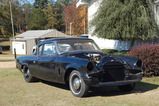I have a 1957 289 and it has to much oil pressure. It has 370 psi on my test guage. I have confirmed it is over 100 psi with another guage. the oil relief valve and spring have maybe 200 miles on them since new. the whole engine has only 200 miles since it was completly rebuilt. I have taken the relief valve out and it is free and not stuck. I even put it in backwards and no change. Any one have any ideas? I dont remember it having to much pressure after it was rebuilt and now it does. It has blown the o ring out of the filter housing and split the rubber line to the oil guage. The engine starts right up and is not noisy when running. Could the spring be defective? I notice the spring is slightly bent when it is out of the block. It also sits at the edge of the hole in the block when it is not compressed by the bolt. Any and all help or ideas would be great.
Russ
Russ


Comment